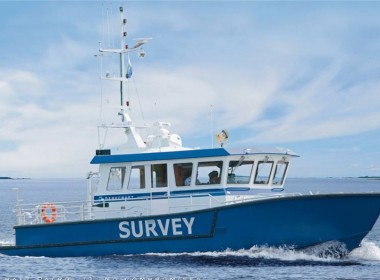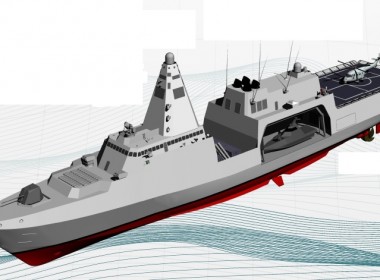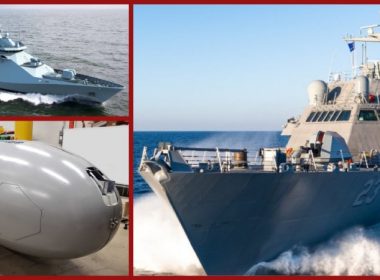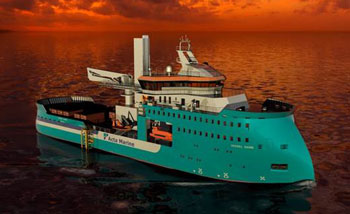Maritime Security Vessel News Roundup | November 1 – South African inshore patrol vessel, Canadian naval support ship and more

The South African Navy christens its newest patrol vessel while the Royal New Zealand Navy welcomes three new fast boats to its littoral warfare force. Construction meanwhile continues on a patrol vessel for the Nigerian Navy and a support ship for the Royal Canadian Navy.
South African Navy christens second Warrior-class patrol vessel
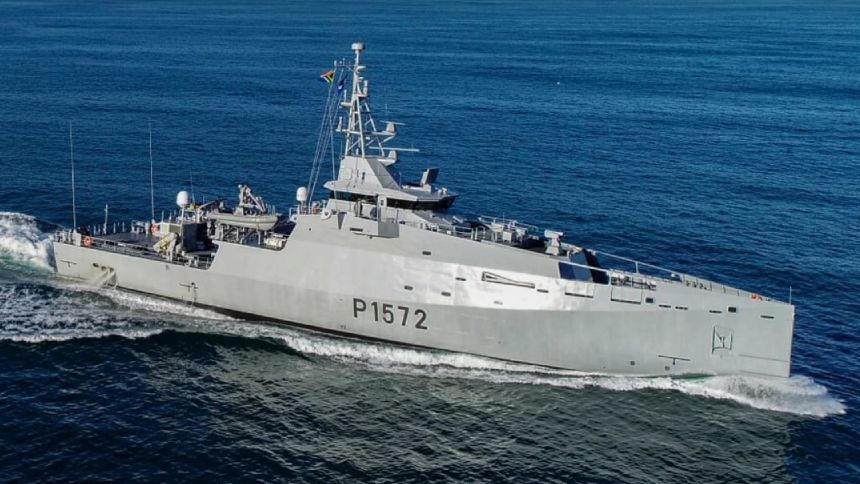
The South African Navy has formally named the future SAS King Shaka Zulu, the second in a series of three multi-mission inshore patrol vessels (MMIPVs) built locally by Damen Shipyards Cape Town.
As with earlier sister SAS Sekhukhune, the second Warrior-class MMIPV was designed by Netherlands-based the Damen Shipyards Group to provide the navy with a rapid response capability for primary missions such as anti-illegal trafficking, anti-illegal fishing, counter-piracy, and mine countermeasures (MCM) as well as secondary missions including dive support, search and rescue (SAR), humanitarian assistance, and crew training.
The vessel has a steel hull, a steel and aluminium superstructure, a length of 62.2 metres, a beam of 11.5 metres, a draught of four metres, and space for 60 crewmembers. A propulsion system that includes four engines, Reintjes gearboxes, and fixed-pitch propellers delivers a maximum speed of 30 knots, a cruising speed of 20 knots, and a range of 4,000 nautical miles.
The armament includes a 20mm autocannon fitted on a remote weapon station.
Royal New Zealand Navy acquires three new high-speed boats
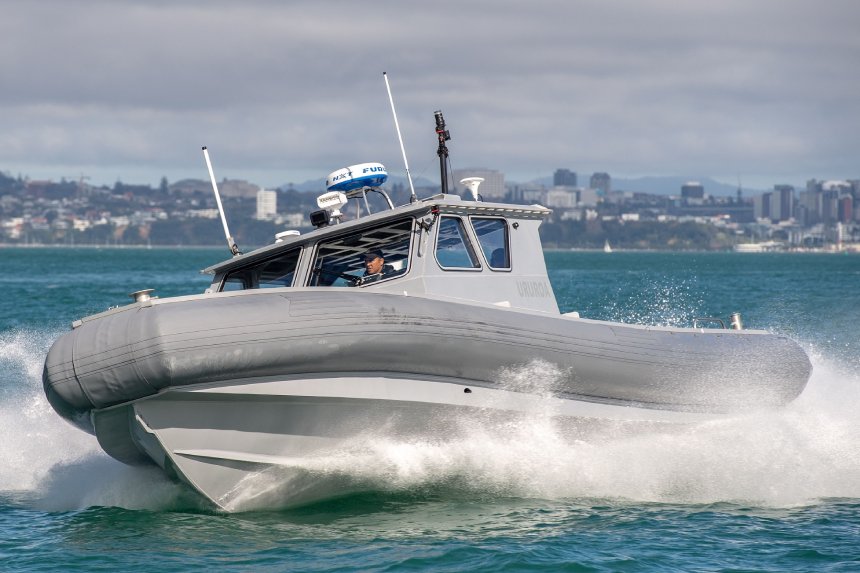
The Royal New Zealand Navy has taken delivery of three new high-speed craft in a series built by Australia-based the PFG Group via its Sentinel Boats division.
The 12.5-metre littoral manoeuvre craft (LMC) have been named Matawha (“Copper Shark”), Ururoa (“Great White Shark”), and Mako after three species of shark found in New Zealand waters. Missions will include diver delivery, troop transport, and hydrographic support.
The LMCs each have a PE-based hull built to be impact-resistant and that generates a low magnetic and acoustic signature, making the vessels ideal for mine countermeasures missions. Power for each boat is provided by two Cummins diesel engines driving Hamilton waterjets to deliver speeds in excess of 40 knots and a range of more than 150 nautical miles even when fully loaded.
The LMCs can each transport six divers with diving equipment and rubber boats, hydrographic survey technicians with unmanned vehicles, or an infantry section of 10 soldiers.
Nigerian Navy’s newest patrol vessel launched in Turkey
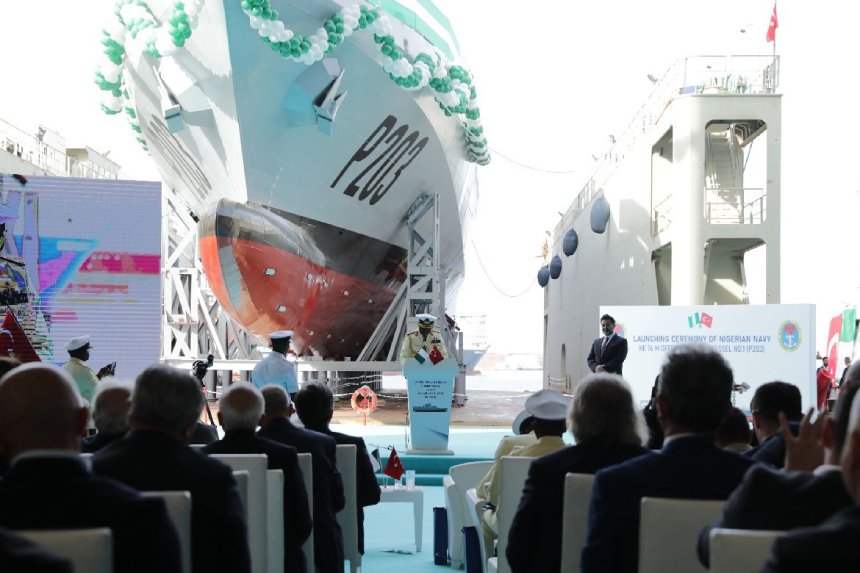
Turkey’s Dearsan Shipyard has floated out the first of two offshore patrol vessels (OPVs) that the company is building for the Nigerian Navy.
Once completed, the OPV will have a length of 76 metres, a beam of 11 metres, a displacement of 1,100 tonnes, and a crew complement of 43. Armament will include 76mm and 40mm naval guns, four 12.7mm machine guns, and surface-to-air missiles.
Four MAN diesel engines will deliver a top speed of 28 knots and a range of 3,000 nautical miles.
Keel laid for future Royal Canadian Navy support ship
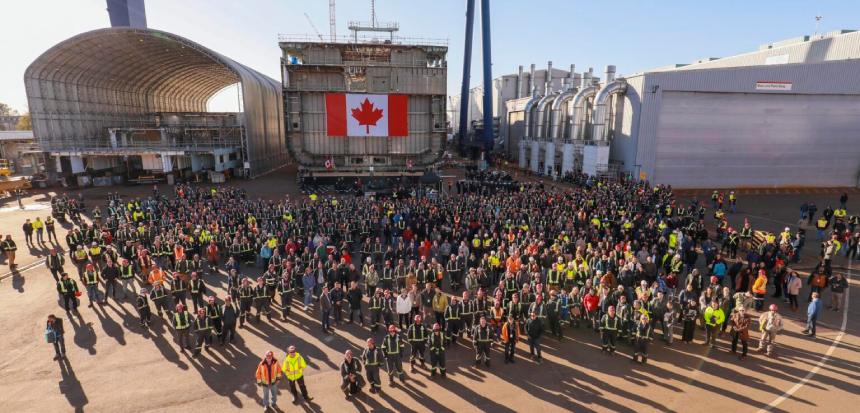
Canada’s Seaspan Shipyards has laid the keel of the second of two auxiliary ships ordered by the Royal Canadian Navy.
The future joint support ship (JSS) HMCS Preserver will have a length of 173.7 metres upon completion, making it the longest naval vessel ever to be built in Canada. Along with sister ship HMCS Protecteur, it will replace the navy’s ageing Protecteur-class auxiliary oiler replenishment vessels.
The JSS will be capable of transporting fuel, ammunition, food, spare parts, and other items in support of deployed Canadian or allied naval task groups.



